|
Communications Educational Photo Series (Page 1) |
||
| These are a series of photographs which were included in a 1940 educational curriculum package. Each photograph was printed on one side of an 8 1/2 by 11 inch card. On the other side was a description of the photograph and the technology that it represented, along with several class discussion questions. The series covered a wide variety of subjects; some of the cards from the communications section are shown here. Most of the photographs, themselves, were from technology and media companies like RCA, NBC, CBS, AP, and others. In some cases, where noted, a larger version of the photo is available. | ||
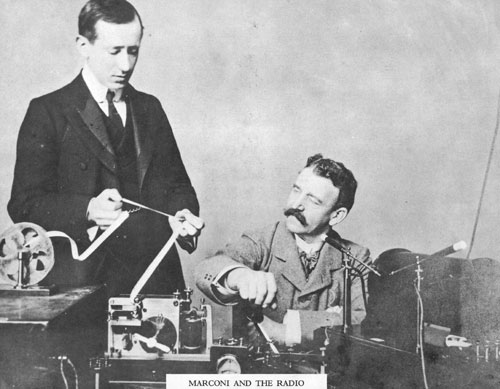 |
||
|
Marconi (left) is seen here examining a strip of telegraph register tape, circa 1899. This equipment is probably quite similar to that which was used to transmit and receive the message that is shown elsewhere on this site. |
||
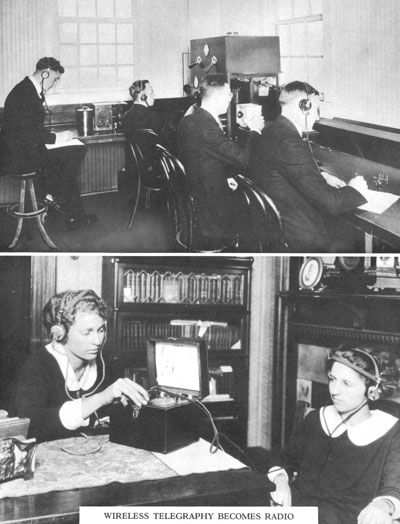 |
||
| The upper section of this
photograph was taken at KDKA, the pioneering commercial broadcast
station in Pittsburgh, PA. The event was the broadcast of the
Harding-Cox presidential election returns in November, 1920. Along
the back wall is a Westinghouse RA/DA receiver. The person in the
center is speaking into a microphone which, no doubt, was based on the
"candlestick" telephone of the day. There appears to be a housing
around it which was probably for sound absorption. The large unit
in the back is the transmitter (100 watts, 360 meters). The lower section shows a Westinghouse Aeriola Junior crystal set (introduced in 1921) in a home setting. Click here (or on the photo) for a larger version. |
||
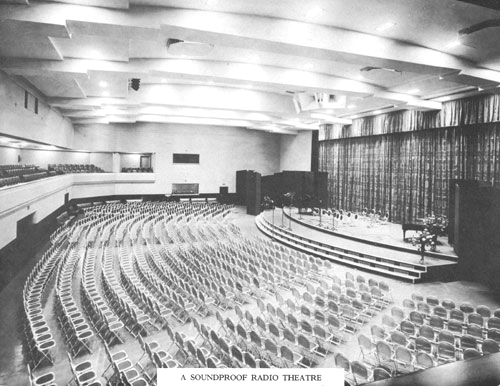 |
||
|
This is studio 8H at NBC's headquarters, Radio City, in New York. There was seating for 1250 people. |
||
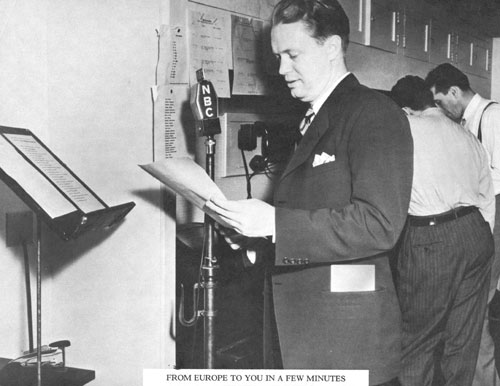 |
||
|
An announcer reads the news. The microphone is an RCA 74-B, and in the background are the teletype machines seen in the next photo. |
||
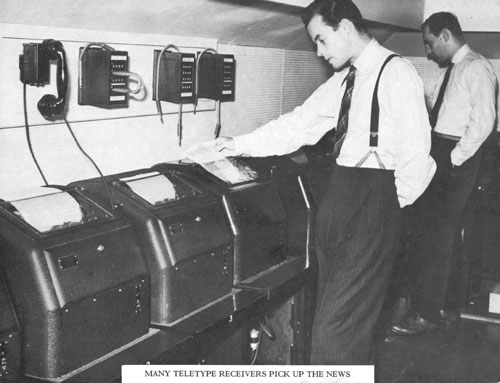 |
||
| Teletypes are quite noisy in operation and, in this installation, there is no apparent attempt to isolate the microphone from the teletypes. In those days, the constant chugging of the teletypes actually came to be so closely associated with news broadcasts that, to this very day, at least one all news station (KYW 1060) still has the teletype sound running 24/7. Even though the last teletypes were hauled out to the junkyard decades ago, the sound is still there, but now it's generated electronically. I wonder how many listeners know what that noise actually represents? | ||
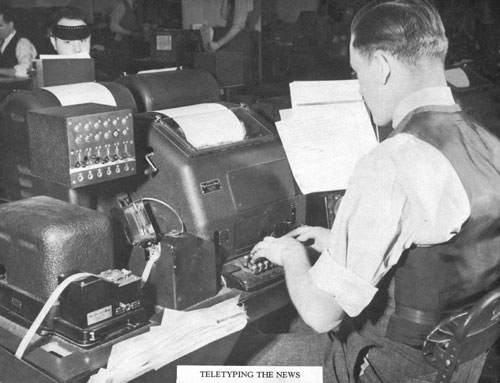 |
||
|
This was digital communication in the 1930's! |
||
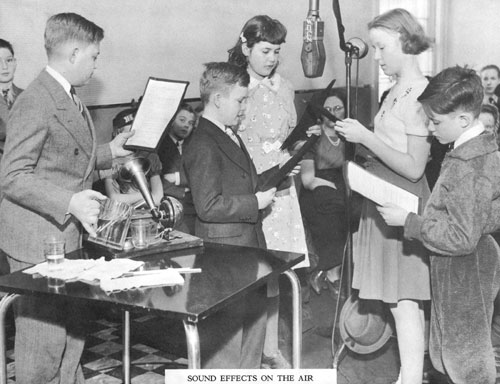 |
||
|
Sound effects, and a children's program at WBEN in Buffalo, NY. |
||
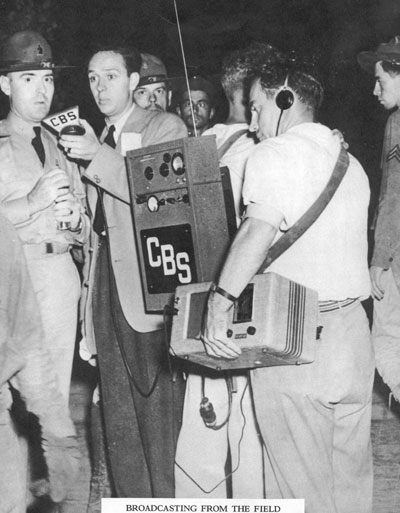 |
||
| In 1940, a remote broadcast was a difficult affair for the engineers that had to tote the equipment. Note the modified commercial portable broadcast receiver that is being used as a monitor. | ||
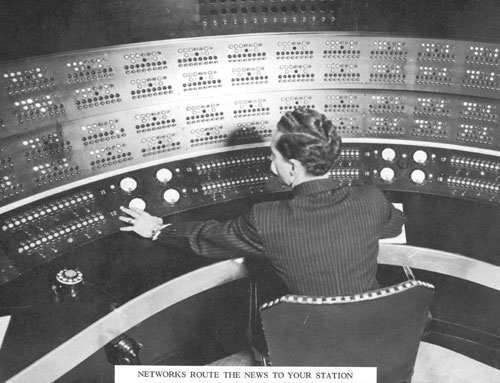 |
||
|
Master control panel for the NBC network, in New York. |
||